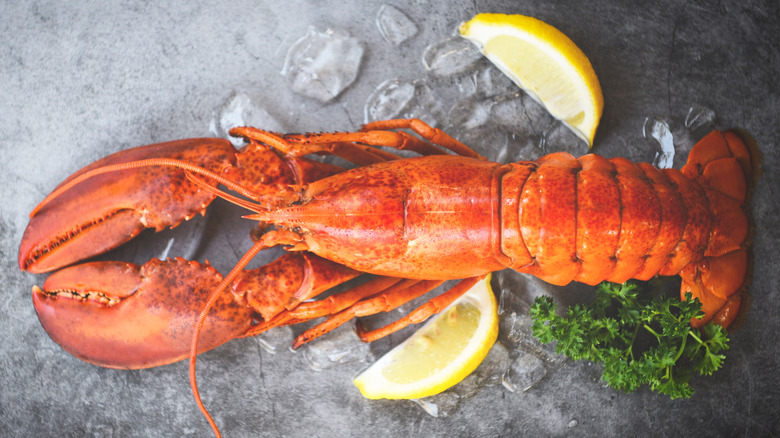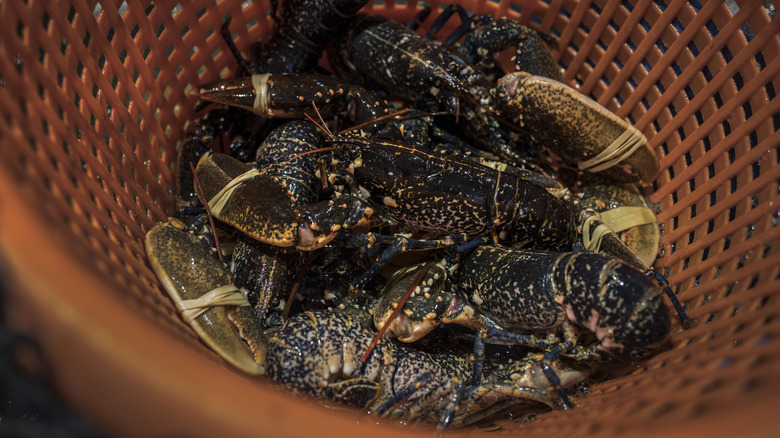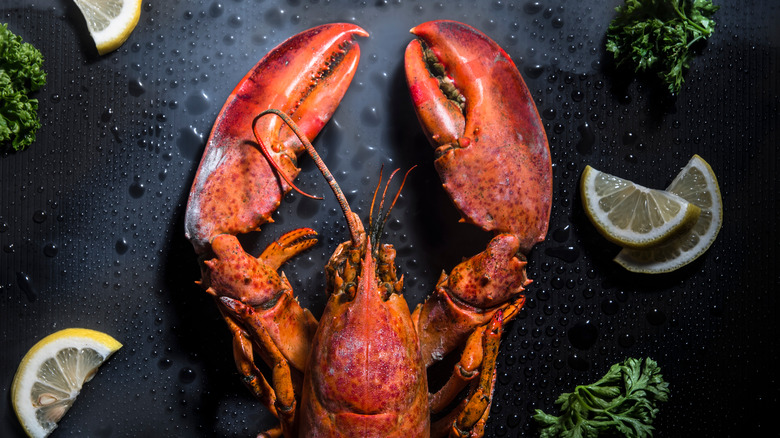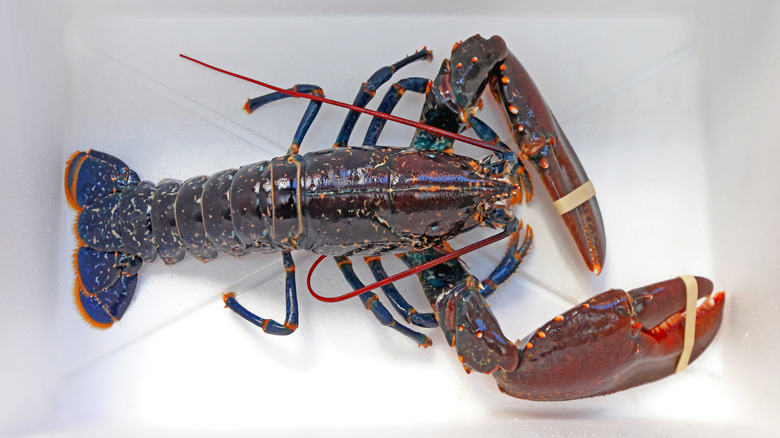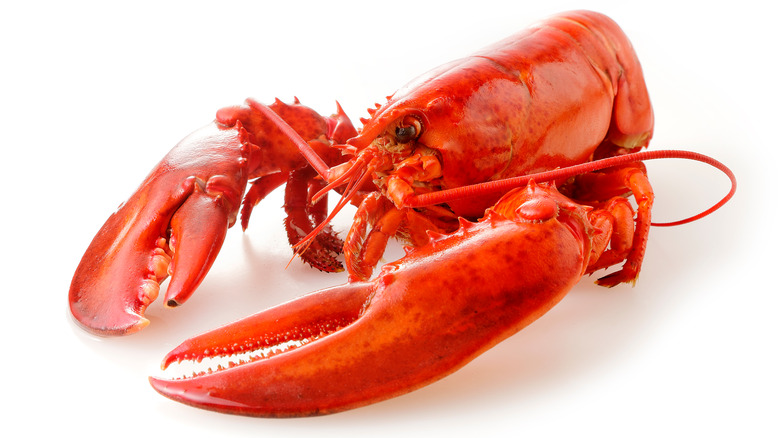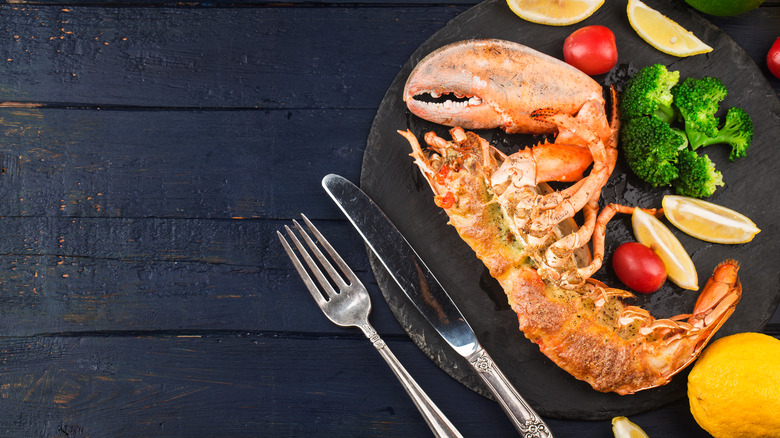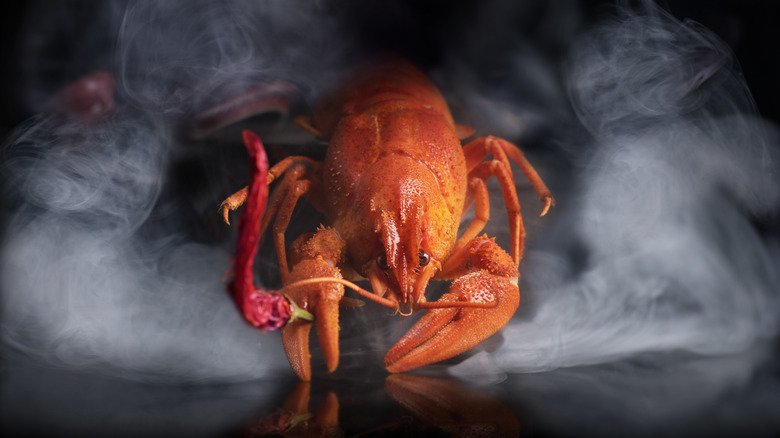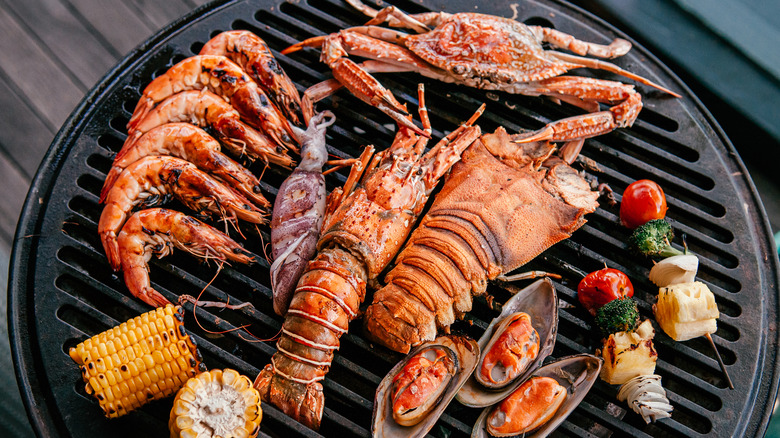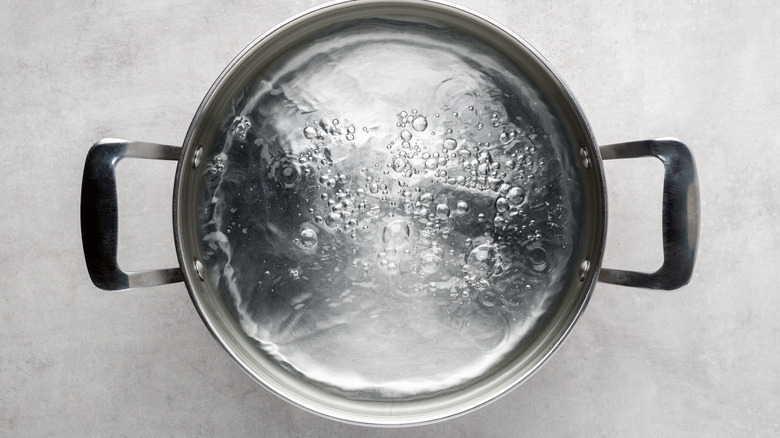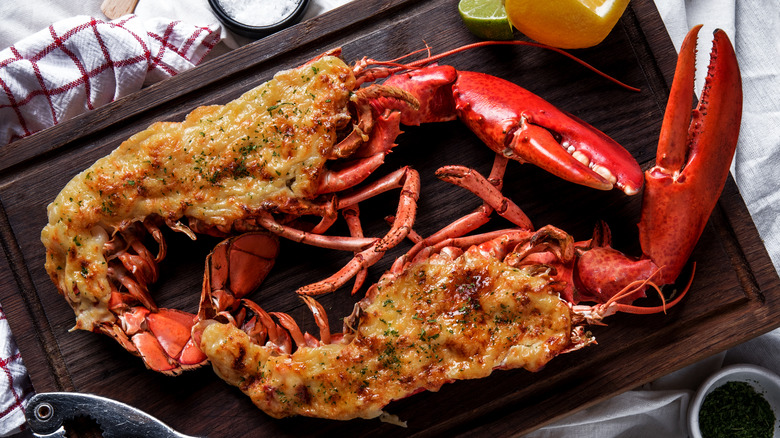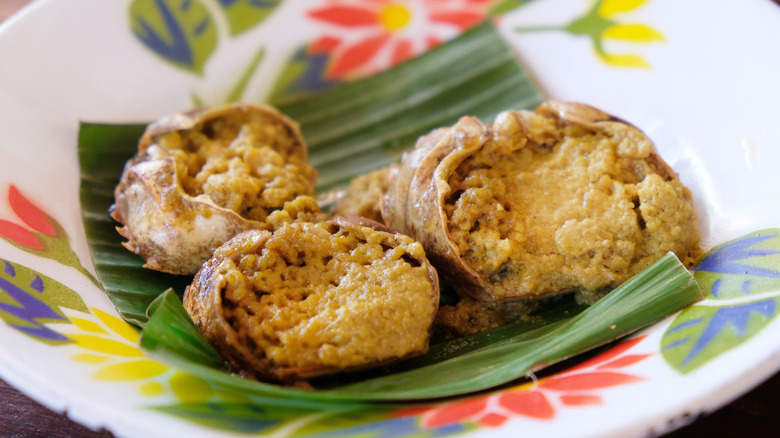11 Mistakes You Are Making Preparing Lobster
If you love seafood, then you know what all the hype is about when it comes to lobster. It has a lovely, light flavor and a soft but slightly chewy texture, and it can be combined with so many different dishes, condiments, and dips. However, if you're like a lot of people, then you probably regard lobster as a food you only eat when you go out to restaurants. It's easy to let other people prepare it, after all. And how are you supposed to handle all of that in your own kitchen?
Well, you may be interested to know that preparing lobster in your own home isn't as hard as you may think. You just have to get the right info to ensure that your lobster comes out perfect. While there are plenty of sources out there that will give you the 411 on how to cook your lobster to perfection, we wanted to make sure you know what not to do when you take on this exciting cooking project. Therefore, we've compiled a list of some of the most common mistakes people make when they're preparing lobster. Avoid these crustacean-crushing pitfalls, and you'll be enjoying a lobster dinner at your own dinner table in no time at all.
1. Getting freaked out by the live lobster in your kitchen
One of the most common and most understandable mistakes people make when they're preparing lobster? Getting intimidated once they see it in the flesh. We get it: You buy a live animal and take it home, and suddenly you have a giant sea bug taking over your kitchen. Sometimes, lobsters can be quite large, and when they're moving around and making noise, you may start to regret every situation that led to that lobster ending up in your personal space.
Thrillist says that another factor that can "throw people off" is the color of the lobster. While cooked lobsters have red shells, the shell of a live lobster will be a dark green color. But don't worry — once you cook your lobster, it's going to look just like what you're used to. It's always a challenge taking on a new cooking project, but as long as you keep that buttery lobster at the finish line in mind, you'll be on the right track.
2. Not buying your lobster at the right place
Of course, the preparation that takes place in your home is of the utmost importance when it comes to making your lobster. But perhaps the most important part of the process takes place before you're even in your kitchen. Before you do anything else, you need to go out and pick up a lobster. But just where should you go?
A lot of consumers make the mistake of going to a random grocery store that has a lobster tank in it. But in most cases, that's not what you want to do. According to Serious Eats, the very best place to get a lobster is directly from a fisherman or a fishmonger. These will be easiest to find if you live in the Northeast. However, if you're anywhere else in the country, you may want to hop online. There are plenty of online vendors that can ship you live lobsters.
If those options aren't available to you, you don't have to give up completely. Instead, try to find fresh, pre-steamed lobster meat. You won't get to enjoy the whole cooking process, but you'll still get to enjoy that fresh lobster taste you love.
3. Choosing the largest lobster you can find
Feeding a whole crew of people with your lobster? If that's the case, then you may be tempted to pick up the biggest one you can find. While that's a solid deduction, that's actually not the smartest way to approach buying a lobster. That's because, according to HuffPost, when you buy a large lobster, you're really just buying an old lobster. Will it have more meat in it? Probably. But the quality of the meat isn't going to be as good as it would be if you were to choose a smaller lobster.
That doesn't mean you have to choose the tiniest one of the bunch. Instead, look for a soft-shell lobster that's about one and a quarter pounds. HuffPost claims that lobsters of this size will have sweeter meat. This should suffice for a standard recipe. Additionally, it will also save you a bit of money over buying the biggest of the bunch.
4. Keeping a live lobster in your kitchen for too long
So, you get home with your lobster, and it starts to freak you out. Instead of cooking it for dinner tonight, you think, why not just make it tomorrow instead? That may seem like a good idea, but in reality, it's not something you want to do. Food Fire Knives says that this is a common mistake people make when they're preparing lobster. They think they can buy a lobster a few days in advance and just store it in the fridge until they're ready to cook.
However, it's not a great idea to keep a lobster in your fridge that long. Ideally, you'll cook it right away when you get home — there's no reason to waste any time. However, you may need to buy it slightly ahead of time. In that case, you're not going to want to store it live in your fridge for more than a day at most. You don't want to lose out on any of the freshness, after all. Get cooking right away, and the end result will be delicious.
5. Throwing out the lobster shells
Once you cook your lobster, you may think you're done in the kitchen and that you can just throw everything away. However, it's important to reduce food waste whenever possible. And sometimes, reducing food waste just might result in a delicious new addition to your kitchen. That's certainly the case when it comes to lobster shells. Many people think that they should just throw them out, but you're losing out on a lot of flavor you've already paid for if you decide to do that.
But don't worry — there's a solution. New York Times Cooking suggests cooking the shells and the legs in a bit of oil on low heat. Keep moving the shells and the legs around the pan to make sure they're well coated in oil. This will infuse the oil with the flavor of the lobster. Sounds pretty fantastic, right? You can then use this oil in a variety of ways. Whether you want to drizzle it on a salad or use it to cook a seafood pasta dish, it's definitely going to come in handy if you spend a lot of time in the kitchen.
That's not the only way to utilize your leftover shells, though. You could also cook them with some water to create a lovely seafood broth that you can then use in soups and stews. This stuff will freeze, so you can just keep it in your freezer for the next time you need some broth.
6. Preparing a dead lobster
Generally, when you cook meat, the animal is already dead. This seems obvious. Therefore, it may not seem like a problem to cook a lobster that's already dead. Less work for you anyway, right? While that might be preferable to wrangling a live lobster, it's not going to yield the results you're looking for, unfortunately. Why? Ryan Poli, a chef at The Catbird Seat in Nashville, Tennessee, told GQ, "You never want a dead lobster or a limp lobster or a lifeless lobster. When the lobster is dead, the meat starts to decompose very quickly, and it'll become mushy when you try to cook it."
Therefore, unless you're getting that pre-steamed fresh lobster, you're going to want to stay away from the dead stuff — unless it's already on your plate. You don't want to risk getting a lobster that's already started to decompose. Not only will it not taste good and take on a weird mushy texture, but it's not good for you either.
When you're shopping for a lobster, make sure you choose one that looks lively ... not one that looks like it's already on the way out.
7. Undercooking your lobster
Raw seafood certainly has its place. We love a good ceviche or some sashimi. But when it comes to your lobster? You don't want it anywhere close to raw. Unfortunately, undercooking is a mistake that people make when they're preparing lobster. It's pretty easy to do, especially if you don't yet have much familiarity with cooking this crustacean. According to Foodsafety.gov, it's important to make sure that your seafood is opaque, which signals that it's been cooked through. But in the case of lobster, you won't be able to tell until it's out of its shell.
Food Fork Knives lays out a general rule we think is helpful. A lobster that weighs one pound should take 12 minutes to cook. Then, you'll add on another three minutes for every additional pound. (You're going to count the time starting from when the water begins boiling.)
If you do undercook your lobster, you're going to end up with a strange gelatinous texture that's a far cry from the juicy, plump lobster you're expecting. Plus, you run the risk of eating undercooked seafood. Therefore, make sure you pay close attention to the cooking time to ensure your lobster cooks to perfection.
8. Overcooking your lobster
While undercooking may be a common lobster-cooking mistake, there's a similar issue that's even more prevalent: overcooking your lobster. According to GQ, it's the most common mistake people make when they try to cook their own lobsters. It's easy to do also, especially if you're trying to make sure you're not overcooking. Unfortunately, some seafood like lobster is not very forgiving when it comes to timing. When lobster is overcooked, it tends to become chewy and rubbery. Not only does this ruin the texture, but it can mess with the taste as well. And the last thing you want to have to do is throw out the lobster you just prepared because you overcooked it by a few minutes.
You can follow the 12-minute rule here too, but just keep in mind that timing will differ depending on how many lobsters you have in the pot or the method with which you choose to cook your lobster. Our advice? Get into the kitchen and feel it out for yourself. Sometimes, you have to experiment so you'll know what to do in the future.
9. Not using incredibly salty water to cook your lobster
You know when chefs or recipe developers are cooking pasta, and they say that you should be boiling your water in pasta that is "salty like the sea"? That's because the salt imparts a lot of flavor in the pasta, giving it some much-needed oomph. It can literally transform an entire dish. And if that's true for pasta, just imagine how important it is for a dish as special as lobster. According to Thrillist, it's very important — a lobster-cooking expert even told HuffPost that "For a true lobster boil, you should cook the lobster in ocean water." We're not going to require you to go all the way to the ocean just to get some water, though.
It can be easy to forget to add salt to the water from your tap. You put a big pot on the stove, throw the water in, and just add the lobster. Right? But don't assume that adding the salt is just an extraneous step. It can make a massive difference in the flavor of your finished product.
10. Only planning on boiling lobster
When you think about cooking your lobster, what image first comes to mind? Probably putting it into a pot and letting it boil away. But is that really the only way to cook a lobster? Actually, some would argue that boiling your lobster isn't even the best way to cook it at all. At GQ, they think that steaming is the way to go. It makes sense — when you place the lobster in water, it's going to lose some of its flavors in that water. When you steam a lobster, though, it's going to cook in a similar way, but all that delicious flavor gets locked inside. If you opt to steam instead of boil, you should calculate six minutes per pound of lobster.
However, you don't have to stick to steaming, either. Grilled lobster is delicious, and it gives you the opportunity to experiment with all kinds of different flavors. Chives, garlic, parsley, chili flakes, olive oil, butter, and a ton of other ingredients can dress up a grilled lobster — and all those toppings will make it look even more impressive. Just keep in mind that if you go this route, you're going to have to kill the lobster before you cook it — it's not the same as just sticking it in the pot.
11. Throwing out the tomalley
We all know that reducing food waste is important, and that means that you don't want to throw away anything that you can use. But when it comes to cooking an entire animal like a lobster, you may not know what to do with all those innards. In fact, you may even wonder if they're edible. Well, there's one part of a lobster in particular that you're going to want to pay close attention to. Per Thrillist, when you're breaking down the tail of the lobster, it's likely that you'll encounter a soft green area. This is the lobster's liver, and it's known as tomalley.
A warning: Tomalley has a strong flavor, so not everyone is going to like it. However, if you've never tried it before, you should definitely taste it. It has a lovely flavor that's quite concentrated, so if you want to try something really different, this is sure to be a fave for you. It's considered a delicacy in some areas, and it's commonly used in dishes in New England. While some eat it on its own, it can also be added to soups as a thickener, according to the Maine Lobster Festival website. Why not be adventurous and give it a try?
